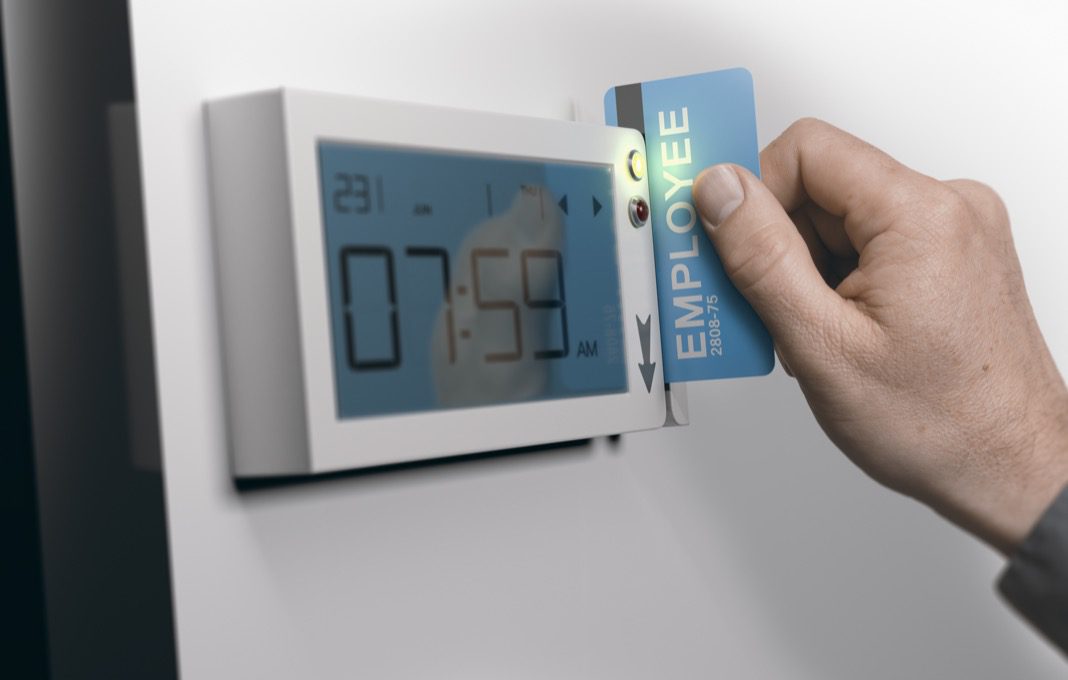The key to boosting employee motivation and spurring innovation at a critical time is hidden in plain sight — tucked into wallets, hanging around necks or attached to a belt lanyard.
It’s time for the humble employee badge to have its time in the spotlight.
Even as technology and the pandemic transformed the workplace and work habits, this slim piece of plastic has barely changed. While it grants office access, shows the boss we’ve arrived, and signals to security that we belong in the building, it could—and should—be doing much more. CEOs dedicated to bringing employees back to the office, building camaraderie and promoting innovation would do well to support reinventing the little ID card.
The badge as status symbol
I meet a friend for drinks occasionally. He never takes off his badge, even at the bar during happy hour. It’s because he’s proud of where he works.
The badge is a status symbol. It makes us part of a tribe, tells us we belong, and signifies to others our working stature. That’s something we’ve been missing the last few years as many of us have been working remotely.
Even as employees post about their layoffs on social media, what’s the most common image they use on Twitter? Their employee ID badge. This pride is something companies would do well to tap into.
Many already put the badge’s psychological effect to work. Amazon and Nintendo use a color system to signify how long employees have been at the companies. At Amazon, new hires are outlined in blue; those who have been with the company 20 years or longer receive a coveted silver badge. Within the walls of Amazon, workers are incentivized to stick around long enough to earn their next color, building loyalty throughout the organization.
Simple badge customizations like these, using already-available data such as start dates, are easy to implement. Perhaps workers could earn colors or markers for coming in three days a week, completing a big project that spans teams, or never missing the weekly all-hands.
Encouraging desired employee behaviors may be as simple as a badge update.
Personalized work environments
Data sourced from employee badges – with permission – could be used to help workers feel more comfortable at the office and even improve their health.
Temperature preferences, or how often the wearer stands or sits, can help build a personalized workplace setting that could be mapped to a badge and activated when the employee swipes in. You could collect health and diet preferences: If a large number of gluten-sensitive workers come to the office one day, the lunch planner could customize choices just for them.
You could even offer employees their own version of Spotify’s wrapped, highlighting and celebrating personal successes and milestones tracked, in part, through the badge system. These benefits won’t make them dread their commute any less, but it could help them feel better about being in the office.
Reducing risk
With underlying technology rapidly improving, badge data is also a critical tool for office security.
Previously, if someone dropped their badge on the street, any random person could grab it and access the office. But just as a security guard might notice a stranger and sound the alarm, security data in combination with AI can ensure that the individual whose badge was swiped is genuinely that person.
It’s an added security layer that reduces risk for the organization and employees alike.
Engineering serendipity through gamification
Steve Jobs wanted just one set of bathrooms at Pixar HQ, and wanted it right at the center of the workspace. This, he reasoned, would force people from various areas to interact. While Pixar employees did get a second bathroom, this method of creating conditions for cross-collaboration could also come from employee badges.
Badge data could be combined with other data sources to identify who’s in the office on a given day with overlapping free time. Algorithms could suggest lunch or coffee ‘dates’ for new connections and suggest topics to start exploring, thus promoting cross business unit collaboration and innovation.
Combine this with a badge-based reward program and you have a powerful driver of employee behavior. PayPal, for example, encourages creative and inventive thinking by using digital currency. Employees earn tokens by participating in innovation initiatives, cashing in their tokens for things like skydiving with their boss or having the CTO set up their Wi-Fi network.
What about privacy?
None of this is possible unless employees agree to let their data be monitored and are assured it won’t be misused. Companies can allow badge users to opt out of data sharing and should be upfront about what’s being stored and how it’s being used.
The employee badge of the future may take many forms. Some will remain physical, slim, plastic badges, while others will incorporate apps, biometrics and other forms of emerging technology.
But the data provided, and what can be done with it, is ripe with opportunity to boost innovation, even employee well-being and work-life balance. No matter what an ID “badge” looks like five, 10, or 20 years from now, it’s the key to personalizing and innovating across all employee experience touchpoints.
With uncertain markets and economic challenges on the horizon, investment in employee experience innovation can improve the efficiency and productivity of existing staff while also laying the foundations for future growth—it all starts with a swipe at the door.
